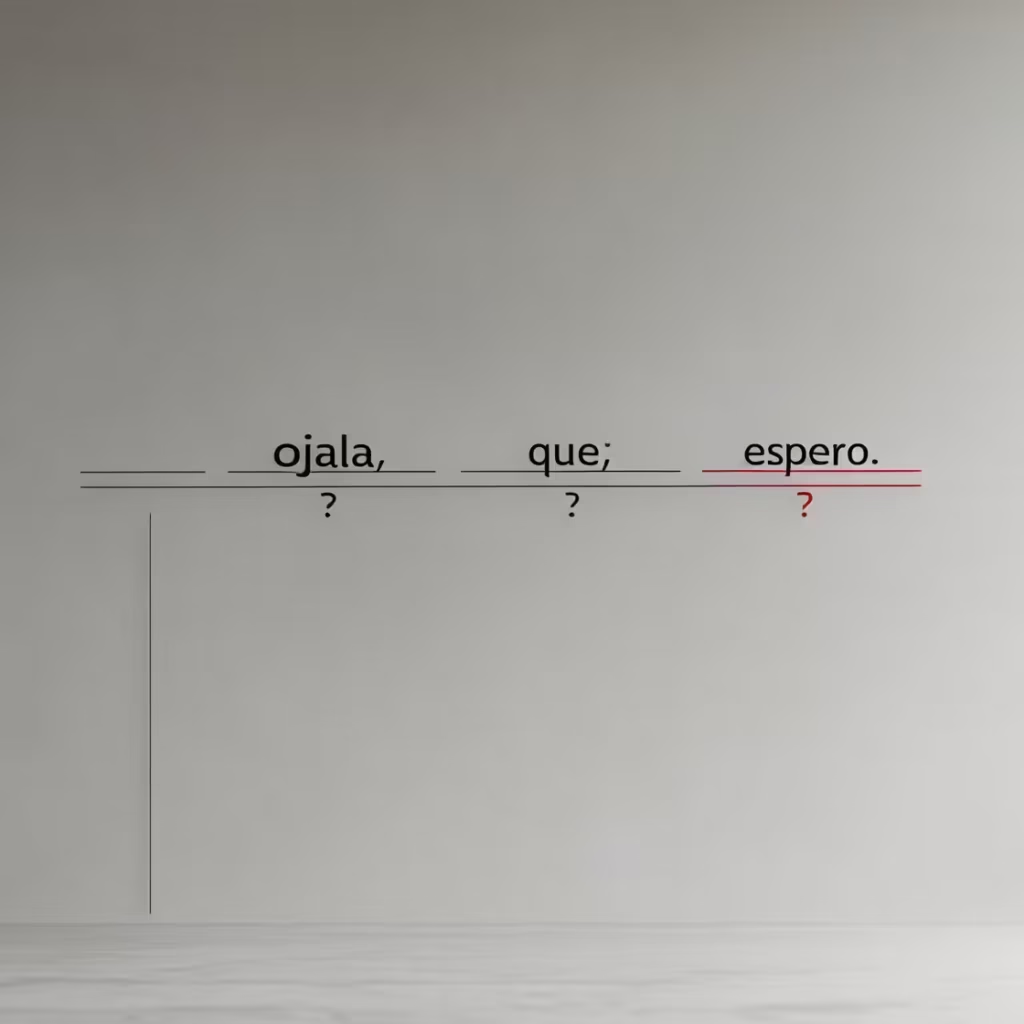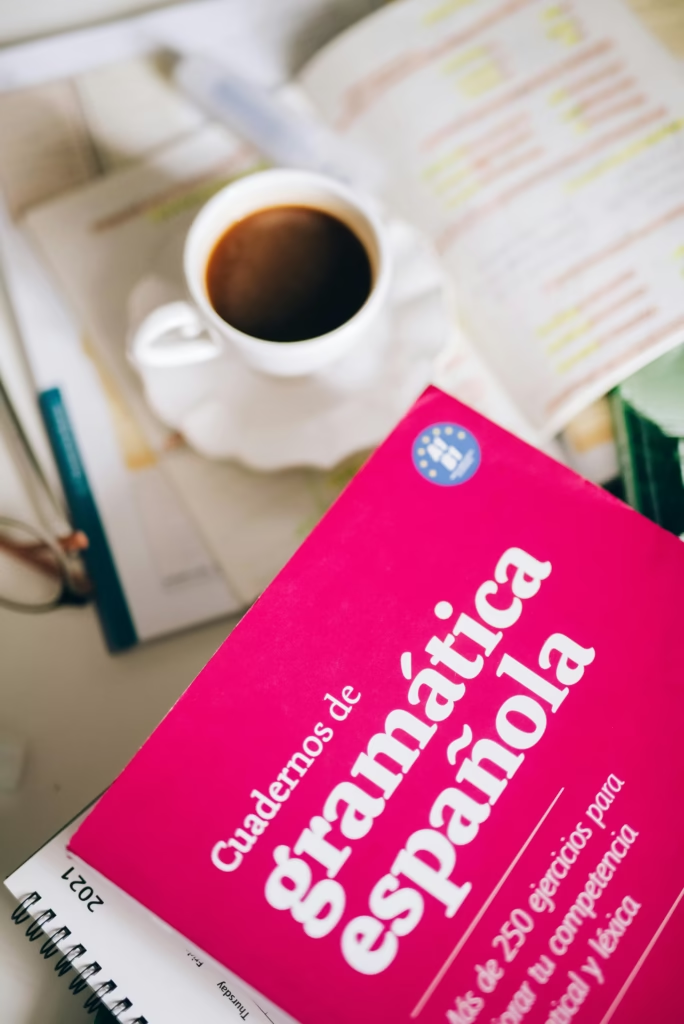Master the Spanish Subjuntivo Naturally: Real-Life Phrases & Speaking Method

If you want to learn Spanish subjuntivo without naturally drowning in grammar rules, you are in the right place. Here you will also discover one powerful active method to boost your mastery.
Why Everyone Struggles with the Subjuntivo
As a native Spanish speaker, I can say that this has to be one of the hardest concepts to grasp in Spanish. You’ve probably heard rules about “qué, cuándo, con que…” and felt stuck. The subjunctive sounds complicated and vague, but it’s simply a tool to express doubt, desire, or emotion. Most of my students find it hard to activate the subjuntivo in conversations, they know the rules but hesitate to use it naturally
How This Guide Is Different — Ditch the Grammar Charts
- Focus on common patterns you’ll actually use.
- Real phrases you can memorize now.
- Practical business Spanish examples.
- A bonus active method (including shadowing) — not your teacher’s grammar drills.
Step 1: Learn the 5 Most Common Subjuntivo Structures

I also struggled with Subjuntivo, back when I was in school, the teacher tried to explain it to us but it was very hard to grasp, so he gave us these tips:
- Esperar que + subjuntive “Espero que llegues a tiempo.” — I hope you arrive on time.
- Es posible que + subjuntive “Es posible que tengamos una reunión mañana.” — We might have a meeting tomorrow.
- No creo que + subjuntive “No creo que ese plazo sea suficiente.” — I don’t think that deadline is sufficient.
- Ojalá que + subjuntive “Ojalá que el envío llegue pronto.” — Hopefully the shipment arrives soon.
- Es mejor que + subjuntive “Es mejor que revisemos el contrato primero.” — It’s better that we review the contract first.
Write these down or say them aloud, record yourself once. Notice how often these come up in email, deals, or listener questions.
Step 2: Use Real‑World Contexts — Business & Everyday Talk with my Audio
| Context | Phrase Example |
|---|---|
| Negotiation | “Ojalá que podamos cerrar este trato hoy.” |
| Scheduling | “Espero que tengamos tiempo para revisar el informe.” |
| Problem Solving | “Es posible que necesitemos adaptar el producto.” |
| Doubt/Clarity | “No creo que esa estrategia sea efectiva.” |
| Recommendations | “Es mejor que hablemos con el proveedor.” |
Add these to your memory bank, they’re your conversation-ready subjunctivo sentences.
Step 3: Activate Your Knowledge — Use This Active Learning Method

We focus on speaking fluency, not grammar paper drills.
- Shadow real audio (listen and repeat) — I’ll show you a guided shadowing method below.
- Record yourself speaking the phrases — notice if your tone, rhythm, and speed feel natural.
- Write mini dialogue exchanges using 2–3 subjuntivo phrases. Say them out loud, record if possible.
Shadowing to learn Spanish subjuntivo
Incorporate shadowing to learn Spanish subjuntivo—hear it, repeat it, use it in your speech
- Choose a short native audio clip (1–2 min) that includes subjuntivo:
e.g., business podcast with subjuntive phrases. - Listen once for overall meaning.
- Shadow line by line aloud: mimic speed, pronunciation, intonation.
- Extract and memorize 3 subjunctive sentences from the clip.
- Record your shadowing attempts and compare to native audio.
A daily 5–10 minute shadowing session dramatically boosts spontaneity and tone.
Check my Shadowing Guide to improve your pronunciation and accent in any language
Common Pitfalls and How to Avoid Them to learn Spanish subjuntivo

- Overfocus on grammar rules → Instead, learn by speaking and hearing.
- Ignoring pronunciation → Shadowing teaches natural rhythm and flow.
- Skipping context → Use examples you would say in real conversations, not textbook ones.
7‑Day Quick Core Practice Plan
| Day | Focus |
|---|---|
| 1 | Learn and say aloud the 5 main subjuntio structures |
| 2 | Record your voice using one example per structure |
| 3 | Shadow lines from a Spanish audio clip |
| 4 | Create 3 mini dialogues and say them out loud |
| 5 | Shadow again + record to compare with native audio |
| 6 | Add new subj. sentences from your own conversations |
| 7 | Record a 1‑minute video or voice note using the subjuntivo |
FAQ — Quick Answers
- Will this method fix all my errors?
Yes—shadowing and repetition embed correct forms faster than rule memorization. - Can I start as a beginner?
Absolutely! Use simpler audio, then gradually level up. - How long to notice real change?
Most of my students report smoother, more confident sentences in just a couple weeks
Next Steps & Resources to learn Spanish subjuntivo
- Listen to SpanishPod101 Business Edition or Practical Spanish with subjuntivo and shadow.
- Tools: Audacity (free audio recording/editing), Anki for flashcards.
- Try to actively discuss topics where subjuntivo is involved, for example to express uncertainty, wishes, doubts, hypothetical situations, and feelings.
Final Takeaway
To be honest, mastering the subjuntivo isn’t just a grammar goal, it’s about expressing ideas and sounding like a natural speaker. Use real examples + active methods, and you’ll go from hesitant to fluent faster than you expect.

Quick Resources to Practice Subjuntivo
- SpanishPod101: Short dialogues with natural subjunctive use, ideal for shadowing.
- Easy Spanish (YouTube): Street interviews, great for listening and mimicking real conversations.
- Hoy Hablamos Podcast: Daily episodes to hear subjunctive in natural speech.
- Conjuguemos: Quick interactive subjunctive practice.
- LingQ: Listen and read Spanish with vocab tracking.
- Anki Deck: Daily flashcards to review key phrases. (Insert your deck link.)
- Audacity: Free tool to record yourself and improve pronunciation.
